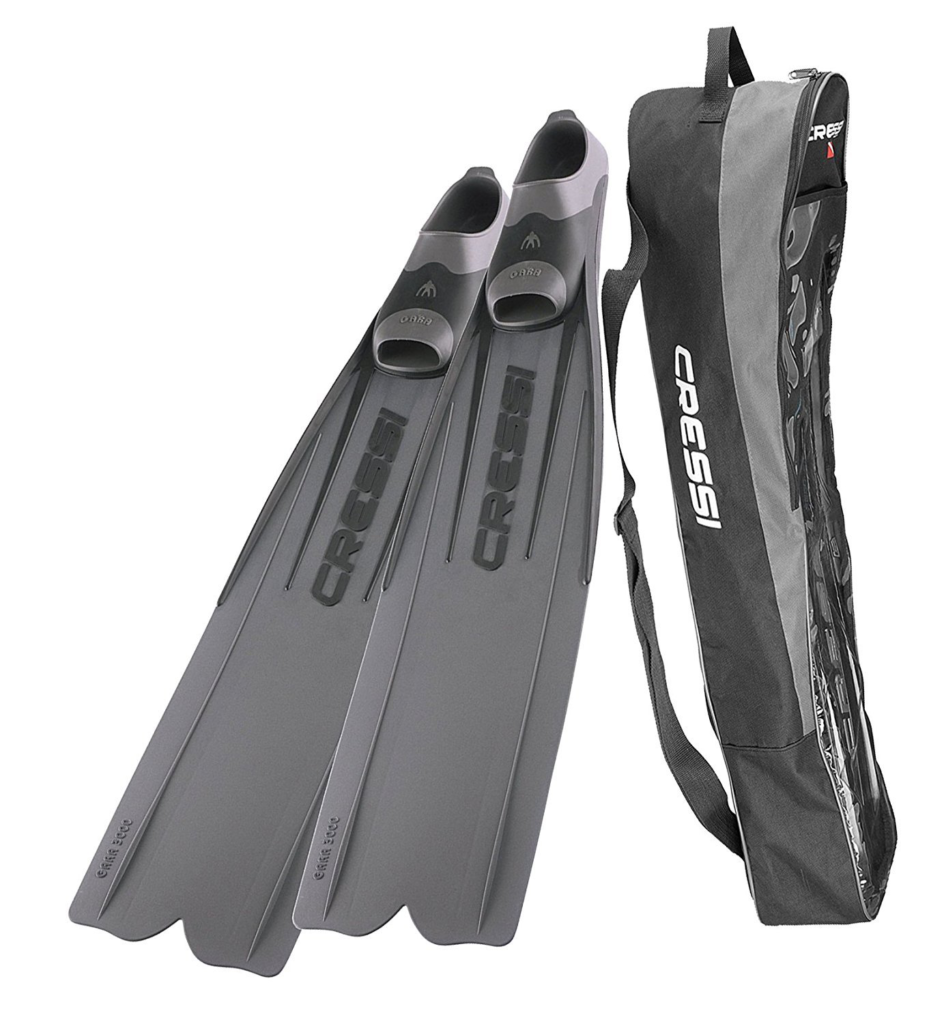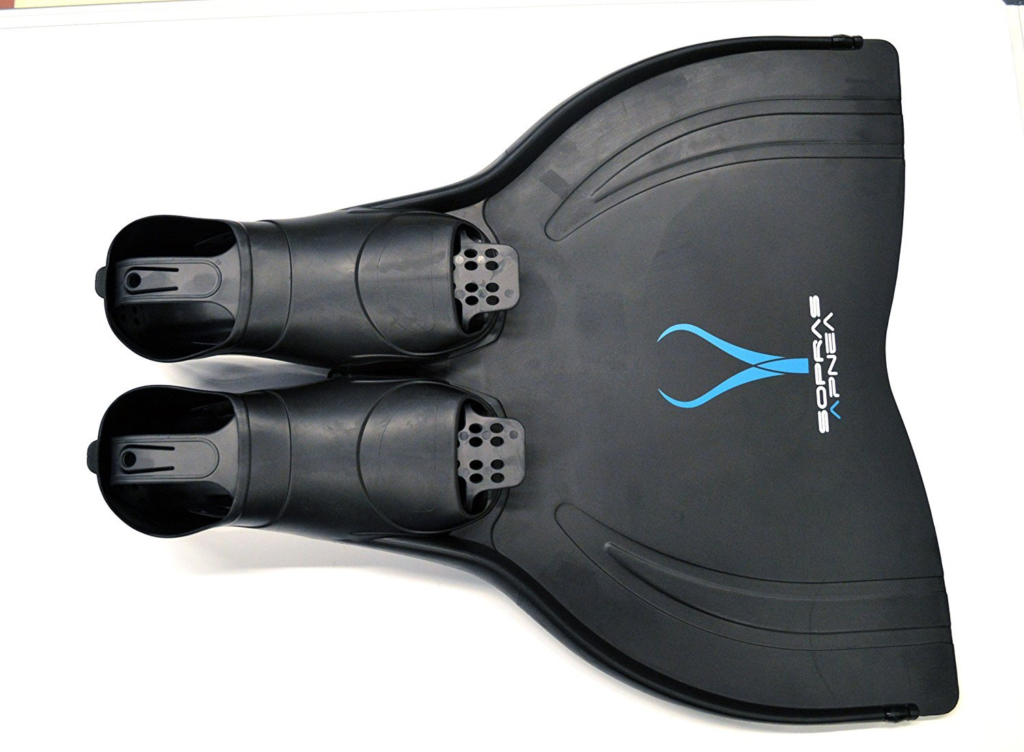
Everything You Need To Know About Diving Fins
This article addresses everything you need to know about diving fins and how to select the set of fins that are right for you.
If you are planning on making freediving a regular hobby, one of the best investments you can me is a pair of diving fins to aid your propulsion through the water. While these aren’t a necessity to successfully freedive, they can make your experiences more productive and more enjoyable. In this article, we break down everything you need to know about dive fins so you can select a pair of fins that are right for you.
What To Know Before Selecting Fins For Freediving
Selecting a pair of dive fins for freediving is similar to selecting a pair of shoes in that no two people will require the same exact style and brand. What might be perfect for one person might not be the best selection for you as a freediver. The following points are a few things to consider when selecting your freediving fins.
Identify your needs – Going back to our shoe analogy, a person requiring shoes for a formal gathering will have different needs compared to someone preparing to run a marathon. Someone who plays basketball will need an entirely different shoe than a person playing tennis. Similarly, as a freediver, you will have to analyze your own goals before you can effectively select a pair of dive flippers. What do you hope to accomplish on your freediving expedition? Are you hoping to cover a lot of distance along the ocean floor? Or, are you merely trying to examine rock formations in shallow water? How deep is the area where you will be freediving? Is it fairly shallow or will you have to reach a challenging depth? Are you a competitive freediver or are you diving recreationally a few times a month? These are the sort of questions you must answer in order to select the diving flippers that are best for you.

Identify Your Environment – They type of diving fins you select will vary greatly. For example, if you are in deep, open water and plan on covering great distances, you will likely require a pair of LONG diving fins in order to gain maximum propulsion through the water. However, if you are planning on diving in tight quarters like underwater caves or around sunken structures or rock formations, you may only need s shorter pair of dive fins in order to give yourself a little extra boost to observe those difficult to reach places.
Identify Your Style – its important to consider the construction and style of the diving fin you are considering. Some fins fit like a boot in that your entire foot slips into them. These models may require some sore of diving sock or additional layer before a tight fit can be reached. Other diving fins may have an open heal with a strap that wraps around your ankle. These might be more suitable for people who are spending an afternoon on a beach or relaxing on a boat.
What Are The Different Types Of Diving Fins And What Are They Used For
Long Fins – The longer the length of the diving fin, the more water they displace with each kick. Therefore, if you want to maximize your propulsion through the water, invest in a longer dive fin.
Short Fins – Shorter fins displace less water while a diver kicks in the water. This may sound like a disadvantage at first but the truth is that this may be preferable for shallow dives. These can also double as a tool to be used with snorkeling or just general surface drifting.
Stiffness – Dive fins actually come in varying degrees of stiffness. Each brand may have its own marker (often either a number or a letter) that will identify the stiffness of the fin in question. Fins with a higher degree of stiffness require more muscular power to be exerted by the diver in order to get the material to flex. Softer grades of stiffness, on the other hand, require less muscular force to be exerted to get the diving fin to flex.
Which Level Of Stiffness Is Right For You?
Generally, stronger swimmers will be more capable of exerting higher degrees of force output with their legs while kicking. As a result, their legs will kick at a higher pace than that of a weaker diver. With that in mind, the power of the more rapid kicking of the legs might actually be lost upon softer dive fins. The diver’s legs might move at a speed that would actually be inhibited by the slow, extended flex time of a longer diving fin. For that reason, a slightly stiffer fin might be preferable to accommodate the diver’s musculature. Furthermore, if you are doing a lot of surface-drifting or if you just don’t need to cover a lot of ground, you may be able to get by with a stiffer fin.
In contrast, swimmers who require a greater multiple on the force exerted by their own legs might actually prefer softer, less stiff fins. With longer fins, a leisurely-exerted kick will have its force amplified by the flexing of the softer fin. As the fin displaces more water than its stiffer counterpart, the diver is propelled with greater ease.
Depending on the nature of your freediving, you will have to make a selection that is best for you. If you are a strong diver or perhaps a diver that is competing, you may need a stiffer fin to accommodate your body type. On the other hand, if your legs are more accustomed to slower, more deliberate kicks, you might want to consider a less stiff fin. Generally speaking, many free divers will fall somewhere between the medium-soft to medium-stiff range.
The Mono Fin
What is a Monofin?
In contrast to the typical fins that you see on divers (one for each foot), there is actually an alternative option known as a monofin. This is a single fin into which both feet are inserted. Think of a dolphin’s tail. Now picture that at the end of a human where the feet should be. This is the concept behind the monofin.
How Is A Monofin Different From Regular Fins (bi-fins)
The obvious difference is the single fin design, into which both feet are inserted. Traditional diving fins, in contrast, consist of one individual fin per each foot. Aside from the overall design of this device, the main difference is the method by which force is generated by the monofin. Contrary to the kicking method employed by users of traditional bi-fins, users of the monofin utilize full-body undulation to create immense power that translates to greater propulsion (in comparison to kicking two smaller fins). Because of the immense size of the monofin, a greater amount of water is displaced with each flip which results in greater propulsion of the diver through the water.
What Are The Best Fins For Freediving?
This all goes back to your specific needs as a diver. What might be perfect for one freediver may not be quite adequate for another. You may gravitate toward longer, softer diving fins while your dive partner might prefer shorter, stiffer fins. However, once you have determined which type of diving fin best suits your needs, the following list of preferable purchase may aid buying decision.
Best Long Diving Fins
Cressi Long Freediving Fins (Amazon ASIN: B01DLJ3Y6I ) – A trusted brand within the diving community, these Cressi diving fins do not disappoint. The long, soft plastic blades on these diving fins are designed for long-distance

Best Short Diving Fins
Cozia Design Swim Fins With Water Sock (Amazon ASIN: B07CG8MB1W ) – If you are planning on mixing it up with some shallow water snorkeling and some long-range deep freediving, then these are the fins for you. They offer enough propulsion to move you through your freedives with ease, all while having an optimal length for drifting along the surface or exploring tight, underwater quarters. They are adjustable with an open heel and straps so they can accommodate a wide range of foot sizes. They are also unisex and can be easily shared among family and friends. This particular package comes with a pair of water socks to add maximum comfort.

Best Monofin
Sopras Apnea Modular Monofin (Amazon ASIN: B075VC5JDH ) – This monofin was designed with freedivers and spearfishing in mind. If maximum water displacement is a priority to you, then you will want to consider this for your next purchase. The design is simple but effective with just the right amount of stiffness to allow divers of all experience levels to use.

No matter which sort of diving fin you select, you can expect to see an increase in your own performance with the aid of these devices. The human body isn’t designed to be structurally efficient in the water. With a pair of good diving fins or a monofin, however, you will gain a physical advantage that will allow you to swim faster and cover greater distances with a fraction of the effort.